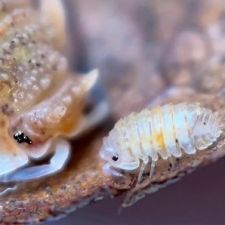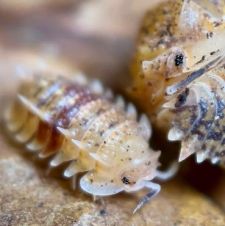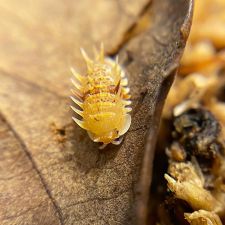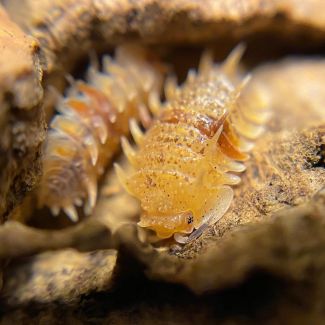Pseudarmadillo spinosus
Pseudarmadillo spinosus is a of spiky species of delatorreiid native to evergreen forests in Cuba. P. spinosus is one of the most commonly reared spiky species, widely prized in all markets of the hobby for the devilish look. Captive breeding of Pseudarmadillo spinosus is fairly stable, a milestone not every spiky species enjoys.
General Information
Background
Pseudarmadillo are currently very rare in the isopod hobby. Pseudarmadillo spinosus is the only one in proliferated trade. Though a number of other Pseudarmadillo species have made it into the hands of experienced hobbyists with the means to distribute them, this has yet to happen.
Description
Pseudarmadillo spinosus is one of a number of highly sought after spiky species, with their defining feature being two main rows of well-developed, presumably defensive spines. Between these can be found a much smaller secondary pair of parallel spines, which may be more or less developed depending on the individual and their age. The body is largely light, with the base color being a range of tan to orange, with red banding around the 4th pereonite and variable red-flaked speckling potentially also present. This variation has been called "Red" or "Blood" but it remains to be seen if the characteristic is actually an isolatable trait that should be named.
Taxonomy
Taxonomic characters of Pseudarmadillo spinosus:
- Its suborder is Oniscidea, which means it is fundamentally characterized by a number of key adaptations to terrestrial life.
- Its zoosection is Crinocheta, which means it belongs to the largest individual lineage of terrestrial isopods, typically unified by the presence of three (or sometimes 4) flagellomeres.
- Its family is Delatorreiidae, which means it has a cephalon with one frontal and two lateral lobes, five pairs of pleopodal lungs, and a tuberculated body.[1]
- Its genus is Pseudarmadillo, which means something to somebody, I hope.
Life Stages
| Manca | ||
|---|---|---|

|
||
| Notes: | Following birth, pereonite 7 not fully developed. | |
| Credit: | N/A | |
| Juvenile | ||
|---|---|---|

|
||
| Notes: | N/A | |
| Credit: | N/A | |
| Subadult | ||
|---|---|---|
| Subadult photo | ||
| Notes: | N/A | |
| Credit: | © The Isopod Barracks | |
| Adult | ||
|---|---|---|

|
||
| Notes: | Adult size. | |
| Credit: | N/A | |
Key Features
Morphological reference images for Pseudarmadillo spinosus:
| Antennal flagellum | ||
|---|---|---|
| Antennal flagellum photo | ||
| Notes: | Antennal flagellum | |
| Credit: | N/A | |
| Telson | ||
|---|---|---|
| Telson photo | ||
| Notes: | Telsons are cool. | |
| Credit: | N/A | |
| Pleopodal lungs | ||
|---|---|---|
| Pleopodal lungs photo | ||
| Notes: | This species has ? pairs of pleopodal lungs. | |
| Credit: | N/A | |
Varieties
| Name | Type | In Hobby | Originator | Market(s) | Notes |
|---|---|---|---|---|---|
| Pseudarmadillo spinosus | Nominate | Yes | US | Canonical variety. |
Husbandry
This species is scientifically unexamined and rarely kept. Care information is not currently available.
Sources
- ↑ Armas, L. & A. Juarrero de Varona (1999): Sistemática de la familia Delatorreidae (Isopoda: Oniscidea) en Cuba. Avicennia 10/11: 1–42.
